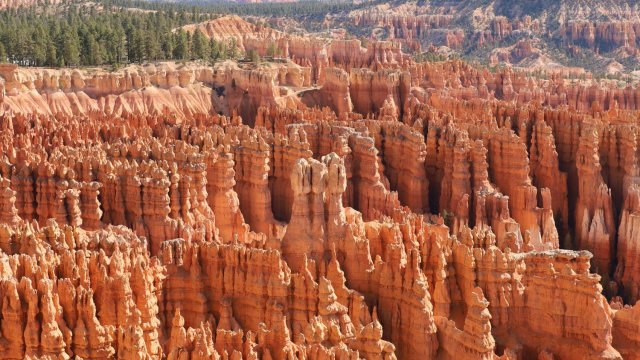America 12-27 Αpril 2025

Bryce Canyon National Park
Bryce Canyon National Park, located in the heart of Utah, is a mesmerizing natural wonder filled with towering spires, vast amphitheaters, and a kaleidoscope of vibrant colors. Renowned for its unique hoodoos—irregular rock columns shaped by millennia of erosion—the park offers an ever-changing landscape as sunlight plays across its formations, creating a stunning interplay of shadows and light.
The park's history stretches back millions of years, both geologically and culturally. Once home to the ancient Pueblo peoples, the area is rich with artifacts and evidence of their connection to the land. European settlers arrived in the 19th century, naming the park after Ebenezer Bryce, a homesteader who lived in the area. Over time, this remarkable landscape has captivated explorers, artists, and scientists from around the globe.
The dramatic terrain of Bryce Canyon is a testament to the relentless power of natural forces. Wind, water, and ice have worked in harmony over centuries to carve the soft limestone into breathtaking shapes, creating the park's iconic hoodoos, canyons, and cliffs. Each formation is uniquely sculpted, with colors ranging from deep red to pale orange and cream.
Visitors to Bryce Canyon can immerse themselves in its beauty through a variety of activities. Hiking trails, such as the famous Navajo Loop and Queen’s Garden, take explorers deep into the amphitheaters for close-up views of the hoodoos. Adventurous visitors can enjoy horseback riding along scenic paths, camping under the stars, or stargazing in one of the darkest night skies in North America.
The park is also a haven for wildlife, home to species such as the golden eagle, mule deer, and even the elusive mountain lion. Birdwatchers and nature enthusiasts will find the park teeming with life, offering countless opportunities to observe animals in their natural environment.
Scientifically, the park holds significant value. Its unique geology provides insights into the processes that have shaped the Earth over millions of years, making it a magnet for geologists and paleontologists alike.
No matter the season, Bryce Canyon’s beauty is unparalleled. In winter, snow contrasts strikingly with the red rock formations, while in summer, the greens of surrounding forests create a lush contrast. Each season offers visitors a different perspective, ensuring that no two trips are the same.
Bryce Canyon is more than just a destination; it’s a journey into the wonder of nature’s artistry. It is a place where the Earth’s forces are magnificently on display, and where every visitor can experience a profound connection to the natural world.

























